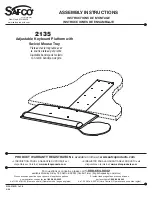
4.3.8 Access Control (continued)
IP Address:
The IP (Internet Protocol) address is a 32-bit number that identifies each
sender or receiver of information that is sent in packets across the Ethernet or the
Internet. The Coordinator’s default IP address is
192.168.1.200
. The Coordinator’s IP
address should be changed to fit user’s networking environment. Consult with your IT
department for obtaining an IP address.
The DHCP will be enabled in the Coordinator if its IP address is set to 0.0.0.0.
The DHCP can also be enabled by setting the DIP switch
#3
to ON position.
Gateway Address:
A gateway is a network point that acts as an entrance to another
network. A gateway is often associated with a router, which knows where to direct a
given packet of data that arrives at the gateway. If the Coordinator is sending packets to
another network node that is not on the same network on which the Coordinator is
connected, a gateway address needs to be given to the Coordinator. The gateway
address should be the IP address of the router connected to the same LAN to which the
Coordinator is connected. The Coordinator default gateway address is
0.0.0.0
. Consult
with your IT department for obtaining a gateway address.
Subnet Mask:
It’s a 32-bit number that is used to determine which part of the IP
address is the network portion and which part is the host portion. The Coordinator default
subnet mask is
255.255.255.0
. Consult with your IT department for obtaining a subnet
mask.
Save:
Saves any changes for above settings.
Reset:
Pressing the Reset button will set all the fields back to their original values.
Network Reset:
Reboots the embedded server. Note that all updated network
parameters take effect after reboot.
Changes made in the "Access Control" page can be saved permanently by
pressing the
Save
button and power recycling the Coordinator (press
Network
Reset
button).
4.4 Telnet Setup
In the Configuration page, set the TCP Connections to 1 - 5 other than 0, and use a
telnet simulation program to connect to the Coordinator (using Port 2000). The
command can be sent to query the Coordinator and you will get a response back.
For a list of commands refer to ASCII/TELNET Commands Table in
Appendix F
.
4.5 HTTPget Program
The HTTPget software is used to send a single HTTP or TCP request to a Coordinator.
In contrast, the telnet or Hyperterminal programs allow a continuous connection with
multiple requests to be sent to the Coordinator.
Generally HTTPget is used for simply programming an IP address to the Coordinator or
for quickly obtaining a reading from a device.
The Coordinator must be configured from the configuration web page so that the "TCP
Connections" indicates any number between 1 and 5. Make sure that the Port Field
number indicates 2000.
48
















































